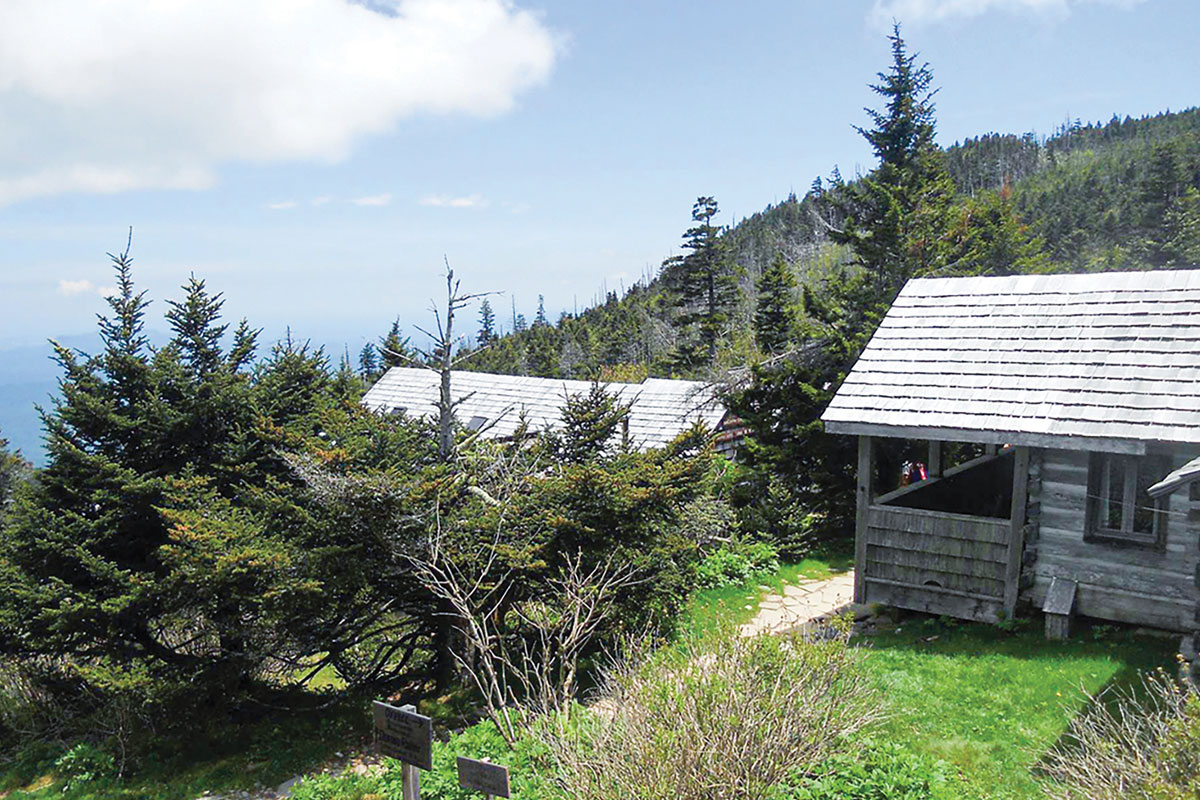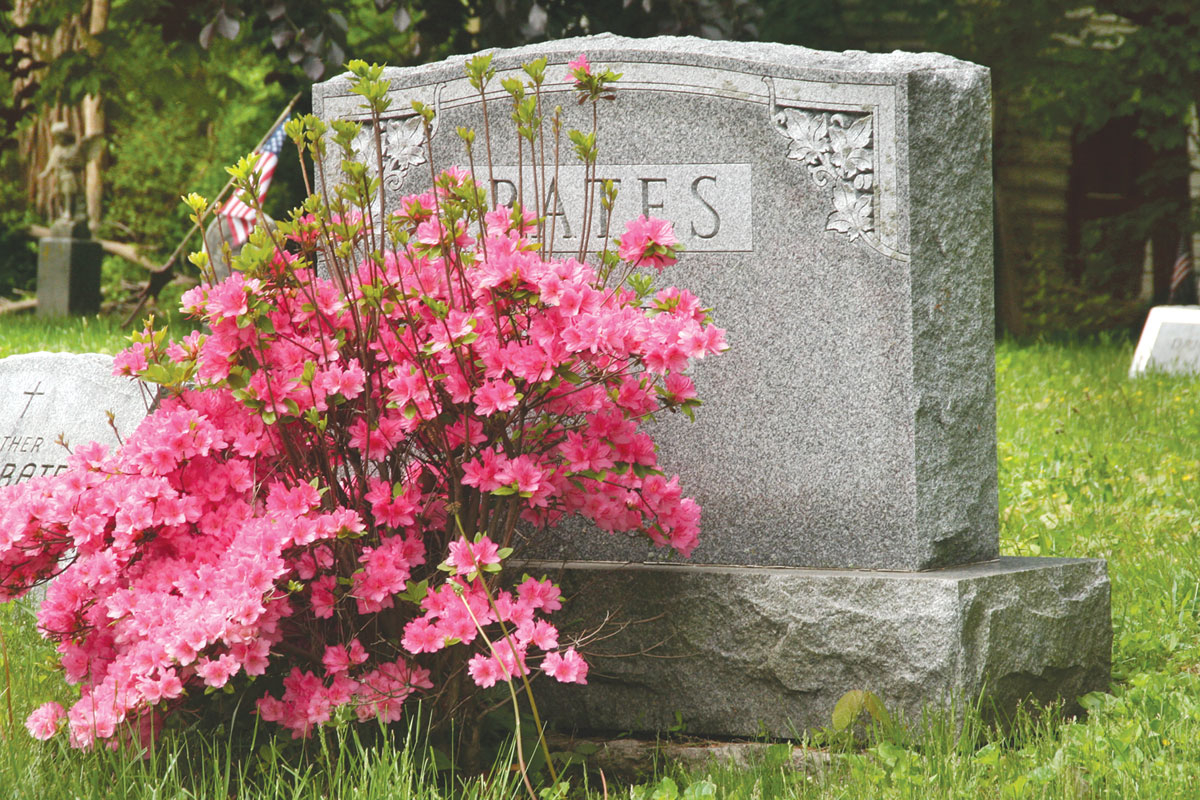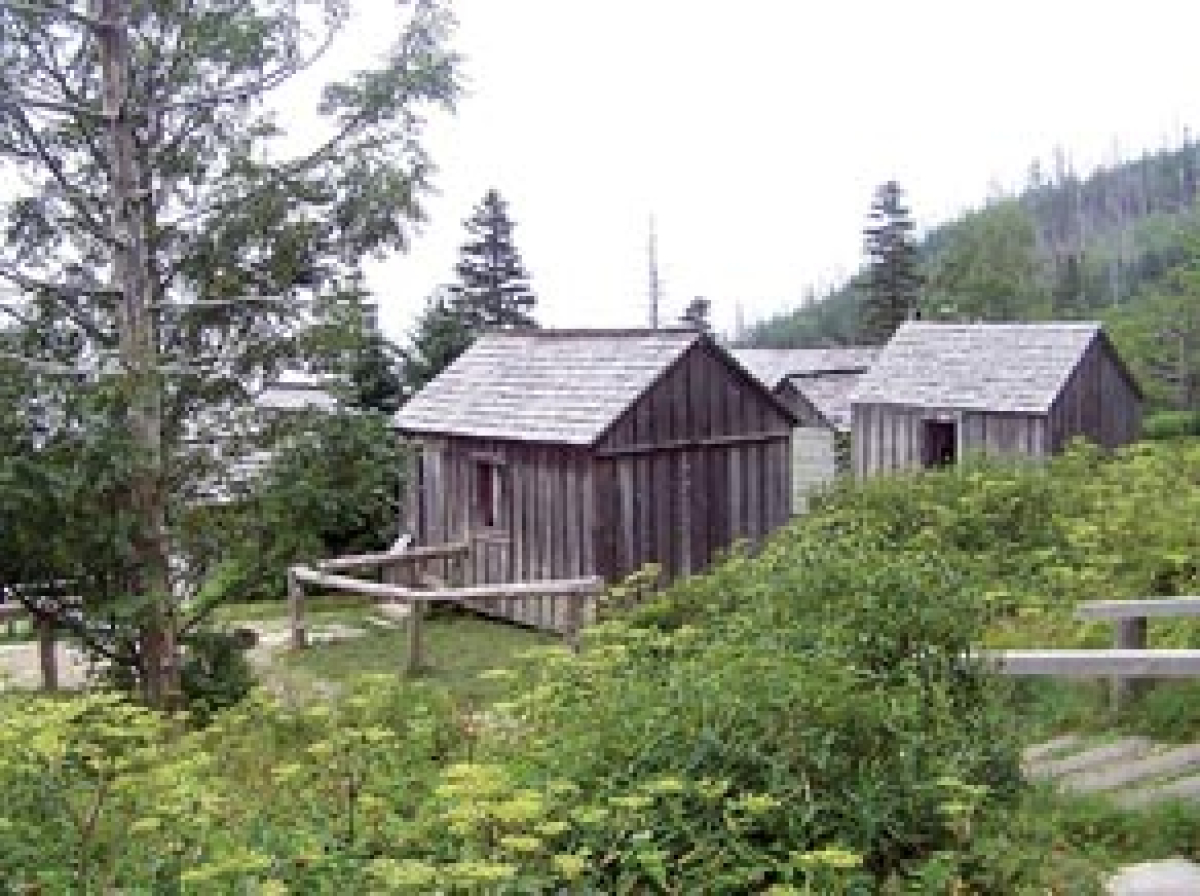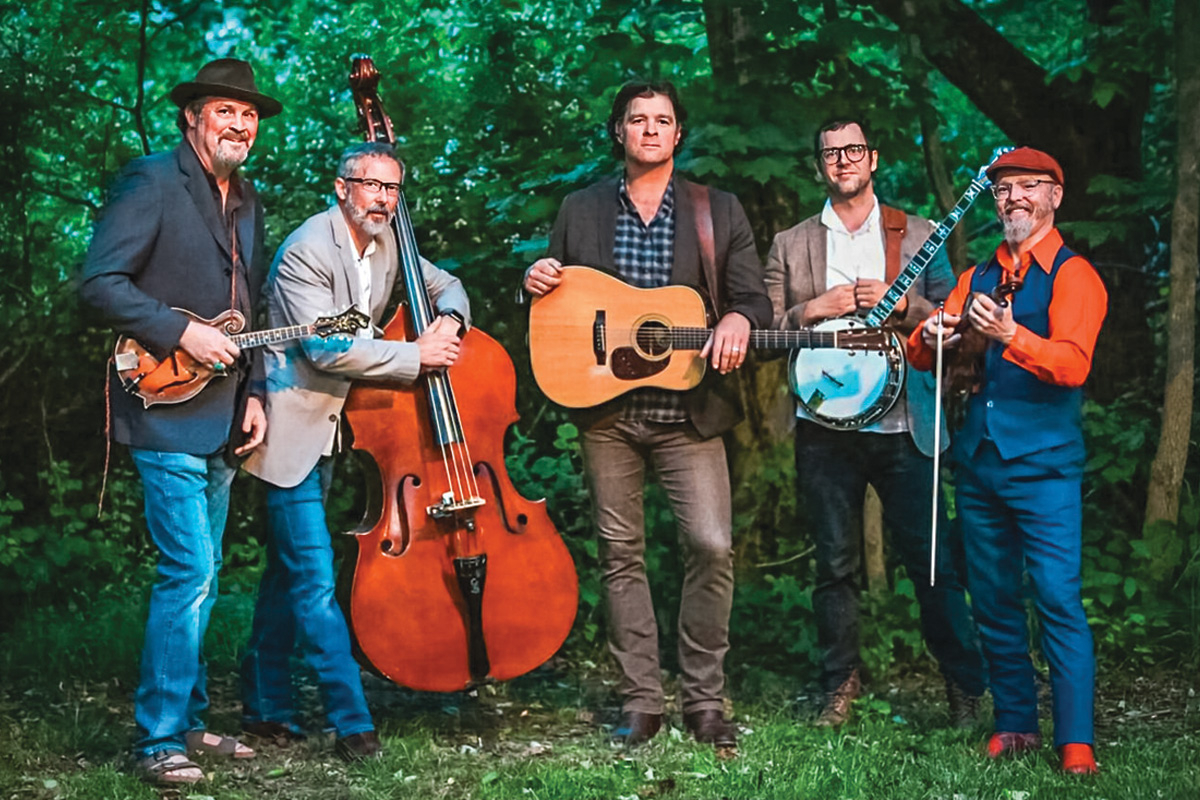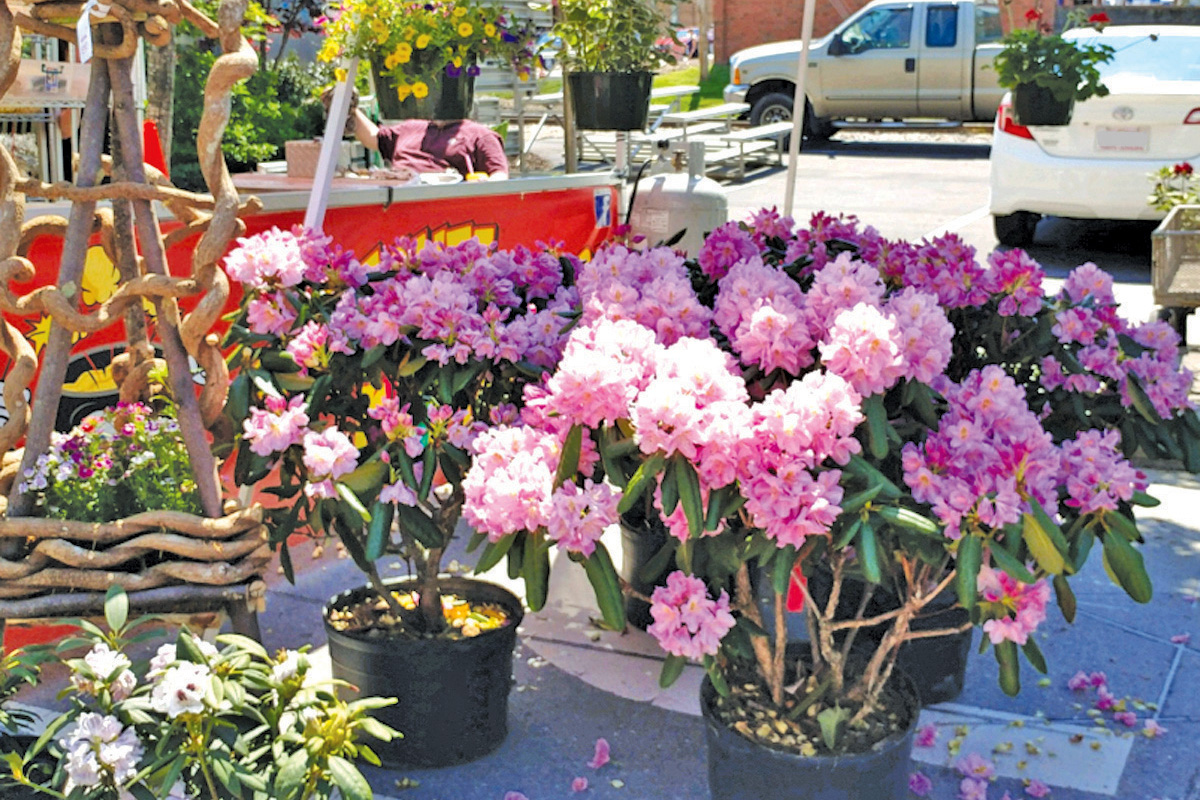Some sushi with that pedicure? Suit pitted neighboring businesses over alleged ‘noxious’ fumes
A sushi restaurant in Waynesville lost a protracted legal battle last month after accusing a neighboring nail salon of driving away its diners.
Saki Sushi claimed fumes from Tweety Nails hurt its bottom-line. Litigation dating back two years culminated in a nearly two-week jury trial in March, ultimately exonerating the nail parlor as the sushi joint could not prove that the smell negatively impacted the restaurant — or even that the nail salon was the origin of the smell.
“It’s a relief. It’s indescribable,” said Steve Nguyen, husband of Tweety, who owns Tweety’s Nails.
The two businesses leased storefronts next door to each other in the K-Mart strip mall on Russ Avenue.
Janet Green, owner of Saki Sushi, which had been there first, claimed “noxious odors and chemicals” began emanating from the nail salon shortly after it opened in fall 2009.
The court-filed complaint by Saki Sushi claimed that the smell interfered with Green’s ability to enjoy the property, among other charges, and sued the salon for as much as $60,000. The restaurant also sued its’ landlord.
But, Nguyen said he believes the lawsuit was retaliation. He and his wife at one time expressed an interest in buying Saki Sushi from Green.
Nguyen said that there is no smell in the building now that Saki Sushi has moved to a location on Howell Street.
On at least a couple of occasions, Green called the police about the smell, and on more than several occasions, she asked employees from the nearby Radio Shack to come into her restaurant and tell her if they smelled anything.
During the trial, at least one witness stated that he noticed a strong acrylic-like odor while in the restaurant. Another witness said her coworker couldn’t eat at Saki Sushi with her because he was sensitive to the smell.
However, the witnesses did not know when the smell started and could not definitely connect the stench to Tweety’s Nails.
One witness testified that the odor was considerably less noticeable and possibly different from the fetor wafting from Saki Sushi. Although Green consulted others about the smell, including the Waynesville police, “Mrs. Green admitted that she never even complained to Tweety about the smell,” said Mark Melrose, attorney for Tweety’s Nails.
All sides attempted to settle the issue through mediation but gave up on resolving their differences early last year. The case finally landed in court last week.
After hearing the evidence presented in the case, Judge Mark E. Powell dismissed all of Saki Sushi’s claims, except for its nuisance claim against the nail salon. Within 20 minutes, the jury returned with its verdict, Melrose said. The jury found no validity to the claim and did not award Saki Sushi any damages.
When considering a nuisance claim, Melrose said a jury must also decide if the business benefits the community.
“Every little thing that bothers you is not a lawsuit,” Melrose said.
For example, it would be extremely difficult to claim legally that the paper mill in Canton is a nuisance because is a crucial part of the town’s economy.
“If you ask people in Canton, they say it smells like jobs,” Melrose said.
Although the case is finally settled, Tweety’s Nails plans to sue Saki Sushi for the more than two years worth of court and attorney fees.
Waynesville welcomes new town manager
After nearly six months of searching nationwide, Waynesville found a new town manager close to home from the town of Black Mountain.
Marcia “Marcy” Onieal recently inked a contract with town leaders to become Waynesville’s new town manager, the first female to hold the job.
“I hope that I will be a good fit with the community,” said Onieal, who listed her past experience in local government and her familiarity with mountain culture as strengths that she brings to the position.
She beat out more than 60 other applicants in a lengthy and comprehensive search to replace Lee Galloway, an admired and respected town manager who has led the town for the past 17 years.
Onieal had been the town manager of Black Mountain — a town very similar to Waynesville — since 2008.
Black Mountain and Waynesville are both quaint towns with progressive feels, sporting vibrant and picturesque downtowns. Both have a healthy tourist trade, without being strictly “tourist-towns.” Black Mountain’s population is 7,800 year-round residents compared to Waynesville’s 9,900. Both are also home to a large community of retirees.
“I like the small town character,” Onieal said.
Onieal said she was attracted to Waynesville because it is a progressive and well-managed town.
“I am so pleased to be coming into an organization that has been so well managed,” she said. “Not every town has a vision, and this town does.”
The Waynesville’s location will also allow her to indulge in some of her favorite activities.
“I love to hike and ski,” Onieal said. And “I’ve always been into art in some way.”
Onieal and her husband James Lamm, an architect and engineer, live on a small farm in Madison County where they care for three rescue horses. When Onieal became town manager of Black Mountain, she was not required to live within the town limits so she decided to rent a condo there and keep her farm.
However, the couple now plans to sell the farm, find the horses a new home and settle down in Waynesville.
As of yet, she has not had much time to see Waynesville’s sights since most of her time in town has been spend house hunting. However, that will quickly change when she assumes her new roles.
Onieal resigned as the town manager of Black Mountain in December, following a change in the make-up of the town board there in last fall’s election.
Although the search process spanned nearly six months and required applicants to undergo intense review, the time between Onieal signing the contract last week and her start date is fleeting. Her first day is March 29.
Onieal will earn $102,000 initially. In October, she will receive a 5 percent raise — bringing her annual salary to $107,100. Thereafter, Onieal will obtain raises equal to those of other town employees. Current town manager Lee Galloway earns $114,091 a year.
The mayor and Board of Aldermen took time Wednesday after announcing her appointment to praise and congratulate Onieal.
“She will be an asset in the community,” said Mayor Gavin Brown.
The newest Waynesville alderwoman, Julia Freeman, agreed, saying she is confident that Onieal will do a great job.
“We look forward to your new ideas,” Freeman said.
Onieal will replace Lee Galloway, who has served as town manager for about 17 years.
“It’s a joy to walk in behind someone who has done such a great job,” Onieal said. “I am looking forward to every single day I walk through the door.”
During Wednesday’s announcement, town leaders thanked Galloway for his many years of service.
“We were very fortunate. Lee (Galloway) has been outstanding as everyone knows,” said Alderman LeRoy Roberson.
Although he is anxious to begin his retirement, Galloway will continue to work for the town until the end of June.
“I don’t feel like I will be left hanging,” Onieal said. “I am grateful that Lee will be around.”
During the next few months, he will help finish next year’s budget and start passing on some his vast institutional knowledge to Onieal.
“My first weeks on the job will be a whole lot of listening, learning and meeting people,” Onieal said. “I have a natural interest the history of the town itself.”
Once she settles into her new position as town manager, Onieal said one of her main focuses will be economic development. And, although the goal is to bring new businesses to town, Onieal said the integrity of the town’s appearance should not be sacrificed for the sake of progress.
And, although he will no longer work for the town, Galloway does not plan on becoming a stranger.
Galloway said he is excited to retire and plans to take six months off to relax and enjoy retirement. He also plans to be an active volunteer, possibly working on trail maintenance, or with Habitat for Humanity or the Red Cross.
“Personally, I’d like to learn more about photography and read more,” Galloway said.
Eventually, he plans to work part-time as an interim town manager for destinations that are in between managers. But, Galloway said he will continue to live in Waynesville.
“Why would I go somewhere else?” Galloway said. “It’s a great community so I’ll be around.”
Onieal’s resume
A Tennessee native, Marcy Onieal moved to Asheville at age 13 when her father, a vice president at American Enka Corporation, was transferred there. Onieal has lived in Western North Carolina ever since.
A University of North Carolina-Chapel Hill graduate, Onieal earned a bachelor’s degree in political science and master’s degree in public administration. She was a Morehead and National Merit scholar. Upon graduation in 1992, Onieal became assistant town manager in Wilson, N.C. She left that position in 1999 to become a partner at Design Group Associates, a family-owned design and consulting firm.
She is also heavily involved in civic and volunteer organizations, including the United Way, Habitat for Humanity, Girl Scouts of WNC, the Black Mountain Emergency Homeless Shelter, Rotary International and Buncombe County Rape Crisis Center, among others.
Lake Junaluska wades gingerly into discussion of merging with Waynesville
In the coming months Lake Junaluska residents will weigh in on whether to become part of the town of Waynesville.
For Waynesville, the move could mean a million or more dollars in additional property taxes each year and the benefits of being a larger and possibly stronger town.
For Lake Junaluska residents, the daily logistics of running a community of 800 homes could be placed in accomplished hands. And perhaps most importantly, the burden of repairing the community’s aging water and sewer lines would be punted to Waynesville.
But, there are downsides, too. Lake Junaluska residents could lose autonomy and identity. And, Waynesville may not want the hassle of managing Lake Junaluska’s infrastructure if it would cost more than the town stands to reap in new property taxes.
“It appears on the surface to be a win-win, but how much? How much to provide the services?” wondered Waynesville Alderman Wells Greeley during a discussion on the idea at a town board meeting last week.
Discussion of the issue is in its earliest stages and will take months to explore.
“This decision is going to impact Haywood County for the next 100 years and beyond, so we want it to be in all of our best interests,” said Jack Ewing, the CEO of Lake Junaluska Conference and Retreat Center.
While Lake Junaluska is not an official town, the community already looks and acts like one. It has its own trash pick-up, water and sewer system, street maintenance and even security force. The roughly 800 homes that make up Lake Junaluska’s residential community pay a yearly fee for those services.
The idea of merging with Waynesville comes as Lake Junaluska residents stare down the growing problem of aging water and sewer lines.
“The community will need to decide whether they would like to bear that burden alone, or as part of a larger group,” according to a report by a consultant hired to analyze the pros and cons.
The idea of merging with Waynesville was borne out of that reality.
Lake Junaluska Assembly hired a consultant to study the issue and prepare a report outlining various options — merging with Waynesville, forming its own town or remaining as it is now.
Ultimately, the decision will rest with Lake Junaluska’s residents.
“Each option has some advantages and disadvantages,” said Ron Clouser, president of the Lake Junaluska Community Council. “I would hope that people would have an open mind and take time to read the study and see what it proposes.”
Ewing said leadership at Lake Junaluska is not endorsing any option and has no preconceived notion about which course is best.
“Over the next three to six months, there will be multiple opportunities for people at Lake Junaluska to provide input on these options,” Ewing said.
Down the road there could be a vote to gauge residents’ opinions.
Clouser said he wouldn’t want to factionalize residents by moving forward without a “practically unanimous” consensus.
“I don’t want to see us go down a road that has a split with anybody,” said Clouser, one of seven members elected by homeowners to lead their residential community association.
Ewing shared the consultant’s report with Waynesville leaders at their town board meeting last week. Ewing told the five town board members they will obviously need to embark on a fact-finding mission of their own.
“You may say, ‘No, we are not interested in partnering with you in that way,’” Ewing said.
Which is cheaper?
One question that will likely weigh heavily in the decision is cost: Will residents of Lake Junaluska pay more in property taxes than they would in annual fees?
Currently, the town’s property tax rate is 40 cents per $100 of property value. That’s more than what Lake residents currently pay in fees, set at 28 cents per $100 of property value.
But, that fee is bound to go up if the lake has to tackle its water and sewer problems on its own. By how much is not yet known, however, thus making a true dollar for dollar comparison impossible right now.
“Property owners want to know is this going to cost me more or is it going to save me money,” Ewing said. “The report is intentionally silent on finances. It is important, but we didn’t want people to begin with ‘what is the cheapest option for me, and I like that option best.’”
Indeed, that’s not the only issue that will weigh on residents’ minds, Clouser said.
“I think it is going to be more complicated than that. I think it will be more than just an issue of that number,” Clouser said.
What may be more important to residents is how their community character and identity could be impacted. Lake Junaluska has a 100-year history, and residents who cherish that may not want to place their future in someone else’s hands.
“There is a track record of what it means to live at Lake Junaluska. That is an issue at this point,” Clouser said.
Waynesville has a track record of its own: one of bringing independent communities into its fold. The neighboring town of Hazelwood merged with Waynesville two decades ago, but Alderman Gary Caldwell says it didn’t lose its identity.
“Hazelwood will always be Hazelwood and Lake Junaluska will always be Lake Junaluska,” Caldwell said.
Yet Clouser said Junaluskans have a deep sense of pride, both emotional pride in where they live and financial pride in taking care of their own.
Ewing agreed.
“One of the issues our residents are going to talk about is their desire for independence,” Ewing said “Many people may wish to stay the way we are.”
But, there’s a caveat. A true “status quo” simply isn’t an option, he said. Residents must understand “the responsibility of going it alone when it comes to upgrading our infrastructure,” Ewing said.
This is where Waynesville may prove its mettle.
“Waynesville is better resourced to address the needs of the Lake Junaluska community, such as replacing the water and sewer infrastructure, the capital equipment of Lake Junaluska and paving the roadways,” the consultant’s report states.
But, joining forces with Waynesville has other perks as well. Simply put, Waynesville is seen as a quality-run town.
“Waynesville already has a well-established, successful, and relatively progressive governance structure,” the consultant’s report states. “They have established a culture of efficient, effective, and professional administration that has not yet been created at Lake Junaluska.”
Sister communities
Waynesville leaders, meanwhile, have to figure out the financial pros and cons of the different options.
“My original reaction is there is a distinct opportunity for the town of Waynesville. The question is, is it cost effective?” Mayor Gavin Brown said.
While the extra property tax looks good on paper, the town would have to hire additional trash crews, police officers and street workers to take on such a large new area.
But, the cost of repairing the lake’s water and sewer system will be the kicker. If it appears that it will cost more than the town is getting in return, the town could temporarily impose higher property taxes on residents of the Lake than the rest of town.
“If there is a need to bring a certain system up to code, they can charge a higher rater to that specific area for a set period of time,” said Andrew d’Adesky, a graduate student with the Institute of Government at UNC-Chapel Hill that prepared the study on behalf of the Lake.
The town, like the residents of the Lake, has more to consider than just economics. Waynesville and Lake Junaluska are kindred spirits in some ways, both forward-thinking communities on each other’s doorstep. Waynesville Alderman Leroy Roberson said the two have a cross-over relationship.
“There is a mutual community,” Roberson said.
Bringing Lake Junaluska into the town’s fold could be a once in a lifetime opportunity to forever change the town’s course in a positive way, Brown said.
“It would be a nice addition to the town of Waynesville,” Brown said.
But, the town must also ask whether it is worth the hassle. Lake Junaluska is three miles from downtown. Can the town afford to have its attention diverted when there are existing parts of town that need attention?
“Should we add another issue to the town’s plate? Would we spread ourselves too thin?” Brown asked.
Waynesville could also enjoy the benefits of a simply being a larger town.
Lake Junaluska community has around 800 homes — about half are seasonal homes, the other half are lived in by year-round residents. Waynesville’s population of 10,000 would increase by at least 10 percent.
That could mean benefits beyond the obvious increase in property taxes. There are numerous slices of state revenue that towns get based on their population — from a cut of sales tax revenue to street and sidewalk funding.
Bigger population numbers also carry bigger clout, which can come in handy when recruiting businesses or lobbying for the town’s interests in Raleigh.
Lake Junaluska: past and present
Lake Junaluska began as a religious community more than 100 years ago, and as a summer retreat for the United Methodist Church. Pastors, bishops and other church leaders founded the Lake Junaluska for religious gatherings and conferences in 1908.
Almost immediately, they began building summer homes there for their families to escape the heat of the South and a like-minded community quickly built around the Methodist Church retreat.
Lake Junaluska is no longer a private Methodist community. Anyone can buy a home and live there, and it is no doubt the lake community is growing increasingly secular.
But, its roots in the Methodist church have hardly disappeared. Many homes have been passed down through the generations. Children with fond summer memories of the lake came back to live permanently. Lake Junaluska also is a hotbed of retired pastors and bishops. The grounds of the conference center, which dominate the main campus around the lake shore, bustles with conferences and retreats throughout the year.
Waynesville eyes Walmart site for new ABC store
After more than a year of will they or won't they, Waynesville's ABC Board will soon decide whether to open a second liquor store in the Super Walmart complex.
"Right now, we still don't have everything approved," said Earl Clark, chair of Waynesville's ABC board. But, "It's a whole lot closer than we were a year ago."
The board is contemplating a second location behind Hardee's along the entrance drive to Super Walmart off South Main Street. The area is considered a prime locale that will allow the town to capture a larger share of customers, whether it's residents or visitors.
The South Main Street plot "would be very ideal," Clark said.
While Canton and Maggie Valley have liquor stores as well, the convenience factor of a store beside Walmart makes it likely people would stop in for their liquor purchases while they are shopping in Waynesville even if they live in other parts of the county.
The ABC board has not purchased the land. A property option has expired.
However, the ABC board still has a few details to figure out. The board is working on a site layout that would work within Waynesville's development rules. One concern is providing adequate parking to match the size of the new store, Clark said.
Waynesville currently has one ABC store on Walnut Street, which dates to 1967. The building is small and can only hold so much inventory. It is also located in a strip mall that's somewhat off the beaten path from main commercial areas.
Clark said the current location is too small for the amount of business it does. Last year, the Waynesville store sold more than $2.1 million in alcohol.
The ABC board operates autonomously from other town entities, but Waynesville does receive a portion of the profits earned from alcohol sales each year.
Waynesville receives an average of $100,000, said Town Manager Lee Galloway.
Although the new store is expected to increase revenues, the town won't see a slice of that for years to come. The additional income will go toward buying the land, building the store and covering additional salaries and overhead.
The total cost of the new store is expected to hover around $1 million but could reach closer to $1.25 million when everything is said and done, Clark said. The property will cost about $500,000 and the remaining amount will cover the cost of construction and the initial stocking for the 5,000-square-foot store.
Just stocking the store alone, a cost that is borne upfront before sales start coming in, will likely cost between $150,000 and $175,000, Clark said.
"We are still counting our pennies," he said. "We want to build something nice."
If the ABC board gives the additional store the green light, then it would operate both locations for at least a couple of years. However, if the board does not see a benefit from keeping both open, it will shut down the smaller, older store in favor of the more prime South Main Street locale.
Meanwhile, Maggie Valley has struggled to make running two ABC stores pay off financially. Maggie Valley opened its second ABC store in 2009 on Dellwood Road. The town annexed a satellite tract a mile beyond the town limits for its new store, strategically situated close to Waynesville's doorstep in hopes of pulling some customers who previously traveled to Waynesville's liquor store.
In 2009 when Maggie's new store opened, revenue at Waynesville's ABC profits dove. While Maggie's ABC revenue grew, Waynesville's dropped by a comparable amount.
But, Maggie Valley's second store has yet to pay off. Sales are barely robust enough to cover overhead at two locations, and the cost of building the new store has not yet been paid off.
The Maggie Valley stores lost nearly $24,000 last year and a little more than $38,000 the year prior.
Profits for the Waynesville ABC store
2011: $146,876
2010: $156,568
2009: $263,229
2008: $252,652
2007: $237,587
Where the money goes
Surplus profits from ABC stores go back into town coffers. Waynesville's ABC profits took a hit the year Maggie Valley opened a second store on Waynesville's doorstep, siphoning off customers.
A portion of the proceeds are earmarked for local law enforcement and an alcohol education but the majority is simply added to the town's disposable revenue.
Guns and greenways don’t mix in Waynesville, but state may say differently
Waynesville leaders are looking for a way to keep guns out of town parks and recreation centers despite changes in the state’s conceal carry law that allow guns in more places than before.
A new state law stipulating where concealed weapons can and can’t be carried seem to leave a gray area when it comes to town parks. The town of Waynesville has always banned concealed weapons at town parks and would like to keep doing so but likewise doesn’t want to go against the new state law.
The law passed last year prevents concealed guns from being carried in recreational and athletic facilities and schools. And, under the law, weapons are legally allowed in some formerly prohibited places such as bars and state parks. While the state tried to be specific where guns are banned, however, the verbiage is ambiguous in some respects.
“There are a lot of questions in our mind, ‘what is an athletic facility? Is a dog park an athletic facility?’” said Town Manager Lee Galloway during a meeting with town leaders earlier this month.
The town’s recreation center on Vance Street and the nearby baseball and soccer fields could be classified as athletic facilities and still ban weapons. The dog park, which is completely surrounded by athletic facilities, would also remain gun free.
Prior to the state law change, Waynesville already had an ordinance in place that prevented people from carrying concealed weapons in town parks.
Several North Carolina communities, including Blowing Rock and Hickory, have begun to question the legislature’s decision, he said. Some town boards have decided not to loosen their ordinances to fall in line with the state.
“It has pretty well been concluded that this will end up in court at some point,” Galloway said.
Mayor Gavin Brown asked the town attorney to draft an ordinance even though a likely court battle over the legislation would leave a final outcome up in the air. And, if the town passes the new ordinance before the matter is resolved, the board can simply adjust it as needed.
“We can change the ordinance” if necessary, Brown said.
Despite any arguments over gun rights, the fact remains that neither Waynesville nor any town in North Carolina has had a problem with permitted gun-toting individuals. Those with permits generally obey the law with respects to their weapons and only use it for protection.
Police Chief Bill Hollingsed said he could not find incidents involving a permitted carrier using a gun at a sporting event or in a park.
“I can’t say that we have a big problem with this; we can’t find any city in the state that has a problem with this,” Hollingsed said.
The people that the town and police need to be concerned about are those who do not have permits but carry a weapon anyway, the town board agreed. The law will not prevent that individual from committing a crime.
“You worry about the people who are going to carry a concealed weapon no matter what the law is,” Hollingsed said.
Waynesville’s once-beloved O’Malley’s up for sale
RBC Bank is looking to offload the building that once housed O’Malley’s On Main Pub and Grill in Waynesville from its list of assets.
A ‘for-sale’ sign has been posted in the window of the vacant building following a bank foreclosure last fall. The once-popular downtown bar had changed management at least four times in six years, leading to a slow but steady decline in business and opening the door for new competition in Waynesville’s bar scene to gain a toehold. O’Malley’s was ultimately forced to close after the building owner failed to make mortgage payments and fell into foreclosure, ending a 20-year run.
At least five people have viewed the more than 5,000-square-foot property, said Jason Burke, a Realtor with Whitney Commercial Real Estate in Asheville.
“I’ve had a lot of interest,” Burke said. “I think it will sell soon.”
He added that two offers have already been made. The asking price is $428,000 for the three-story building, which includes an upstairs apartment and basement. The building and business together sold for $875,000 in 2005, but O’Malley’s was still a thriving business at that time.
Buffy Phillips, executive director of the Downtown Waynesville Association, said the business is a more difficult sale because a new owner must commit to purchasing the while building rather than leasing it.
“I think the financial end of it is holding it up,” Phillips said.
Phillips said she would like to see a restaurant occupy the space and believes it could be profitable. “If there is something unusual, if there is a different idea, if there is different food choices than we already have, then sure,” she said, adding that she has approached several people about the vacancy.
Waynesville already has “a couple of really good bars that have excellent food,” Phillips said about the idea of opening the business as a bar once again.
Tourism officials hope the anchor storefront doesn’t remain vacant but instead is put to work creating jobs and generating additional revenue in the county.
“O’Malley’s is a great space for a new business on Main Street,” said Cece Hipps, president of the Haywood County Chamber of Commerce, in an email. “The space will require that the business have both financial resources to purchase and time to up fit the space to their needs.”
Cumbersome baggage
Before the building landed in foreclosure, it was home to O’Malley’s On Main for 20 years.
During its early years, the bar filled a niche. It was the one and only bar on Main Street, a community gathering spot with a genuine Cheer’s atmosphere. A spate of management changes set off a decline in customer service, however. Meanwhile, what was once the only game in town began facing competition scene from a burgeoning downtown bar scene with establishments like Tipping Point Tavern, The Wineseller, The Sweet Onion, The Gateway Club and Frog’s Leap.
By the time Lisa Bessent leased the business in 2008, it was already on the way out.
“It had a lot of bad reputation to overcome,” Bessent said. “It was just a struggle the whole time.”
During her tenure as owner of O’Malley’s, Bessent said she never once wrote herself a paycheck but would bartend or wait tables if she needed petty cash. Everything else went back into the business, she said.
“I was not making any money at O’Malley’s,” Bessent said. “I’d never ran a business in my life.”
Bessent attributed part of the bar’s poor bottom line to competition from Hurley’s Creekside Dining & Rhum Bar, which captured customers from the nearby ski resort in Maggie Valley who previously traveled to Waynesville in search of a bar.
Regardless of the actual business, the then-building owners Eric and Jon Mostrom of Minnesota defaulted on their loan to RBC Bank, which had lent them $510,000 in late 2005. The vast majority of that loan — more than $420,000 — had still not been repaid by March of last year. So, the bank started the foreclosure process and later purchased the building at a discount on the courthouse steps.
When the bank announced that it was foreclosing on the building, Bessent decided to take what money she had left and move on rather than continue to sink everything she had into the business while waiting for the final foreclosure date.
The foreclosure was Bessent’s lifeboat off of a sinking ship. It was the “perfect out,” she said.
Despite her luck the first time around, Bessent, currently a bartender at The Gateway Club, would like to run a bar again in the future.
“I would really like the opportunity to run another business like that,” she said. “Now, I have experience under my belt.”
However, she said the name O’Malley’s is stained and brings with it cumbersome baggage.
“I don’t know if putting O’Malley’s back in there would be a good idea at all,” Bessent said.
The things she enjoyed most, Bessent said, was being able to socialize with people and escaping the regular 9-to-5 day.
“It was like my living room,” she said. “I really miss that part of it.”
Skate park dream revived with pledge from town
Waynesville leaders have committed to foot the bill for the long-held dream of a skateboard park — and it will receive help from an unexpected place.
After years of pinning their hopes on grants and private fundraising that only partially materialized, town leaders have now decided they must move forward with the construction of a public skate park or kill the idea all together. The town board discussed what to do about the skate park at a daylong annual planning session last week. And, fortunately for local skateboarders, the town has said it will fund the project no matter what.
“I sort of like the idea of being able to hang our hat on (the skate park investment),” said Alderman Wells Greeley. “We are going to have parents who will bring their kids over to Waynesville for the day. This falls in the category of what I call good growth.”
Alderman Gary Caldwell has been advocating for a skateboard park for 15 years and was the most vocal board member when discussing the skate park last week.
“I know I am asking a lot,” Caldwell said. But, Caldwell said he wouldn’t stop lobbying for it.
“It’s not a dying issue,” he said.
Plans for the park continually stalled during the past decade as the town struggled to find financing for the project.
“I think it’s something that has been wavering too long,” said Alderwoman Julia Freeman.
Freeman said the town should support projects that benefit kids and get them active.
That’s exactly what the town did in 2010, when it put up $30,000 to hire a consultant to design a skate park in collaboration with ideas from local skateboarders.
The price tag to build a skate park was pegged at $325,000. The town has amassed almost $137,000 toward the cost: a $60,000 grant from the N.C. Parks and Rec Trust Fund, a $20,000 grant from the Waynesville Kiwanis Club and another $40,000 committed by the town itself.
With blueprints for a skate park in hand, the town hoped it would kick-start fundraising, but only $5,000 in private donations has been raised in the past year.
That leaves the town $190,000 short to fund the project.
If the town continues to postpone the project, the cost will inevitably increase with inflation.
“The longer the delay, the higher the price — for the same thing,” said Alderman LeRoy Robinson.
A facilitator from the Southwestern Commission who was running the town’s planning meeting tossed out the idea of scaling back the project and thereby reducing the cost. But, town board members did not seem receptive to that idea.
“If you scale it back, you are going to reduce the challenge, and that is part of the draw of something like this,” Robinson said. “If they don’t feel it is a challenge, they will be back on the street.”
Skateboarding on town sidewalks and most streets is illegal, and violators could be fined $50 or, even worse, have their board taken away. But, that doesn’t mean kids aren’t doing so when no one is watching.
“That has been a major issue,” Caldwell said. “It’s a nuisance.”
The park will give those kids a free place within walking distance of downtown to skateboard legally.
The design for the skate park, developed by Spohn Ranch Skateparks from California, includes bleachers for spectators, at least four ramps and a raised platform with rails, among other features.
“To be honest with you, I’ve been trying to do this forever and ever, but I never envisioned it to look like this. This is amazing,” Caldwell said.
Although the town is building the skate park, it will not staff it, limiting its liability in the event of an accident. Once the park is complete, the town could host competitions there, which would draw visitors and their checkbooks.
As luck would have it, money materializes
As the Waynesville town board grappled with where it would find $190,000 to fund the remaining balance of a skateboard park, it realized somewhat accidentally it was staring a new source of revenue in the face.
At the same meeting where the skate park was discussed last week, the town also took up the issue of whether to start charging fees for controversial sweepstakes machines as several other towns in the region do.
The board agreed in an epiphany moment that recreation would be an appropriate use the new income.
It would likely not be enough to fund all that is needed, however. Maggie Valley and Canton currently tax the sweepstakes machines in their respective towns. Maggie collects $8,250 a year, while Canton rakes in nearly $32,000 each year.
Chefs will tee up their best for the Masters
Like most great tales, it began like any other day.
Sous Chef Alex Tinsley, 24, was working his usual day in The Gateway Club’s kitchen — chopping veggies, toasting buns, helping to ensure that any food that left the kitchen was perfect or as close to perfect as it could be. Then, co-owner Art O’Neill asked to talk to him.
O’Neill had received a call from a friend who was lining up personal chefs for golfers competing in the Masters Golf Tournament in Augusta, Ga., this April. Unable to work the gig himself, O’Neill asked Tinsley and Executive Chef Daniel Morris, 27, to take the spot.
“Of course, I said ‘yes’ immediately,” Tinsley said.
Both are accomplished chefs in the area and, as luck would have it, golf lovers.
“Daniel and I are both golfers — poor ones at that,” Tinsley said, laughing.
Tinsley and Morris will spend the four-day tournament bunked up in the same house as their assigned golfer — namely British pro Ross Fisher — where they will eat, sleep and breathe the world of golf while hopefully wowing him and his support entourage with their cuisine.
The gig is being coordinated by Horizon Sports Management, a firm that represents professional athletes and lines up any and all accommodations during the Masters, including renting houses in the Augusta area for them to stay in.
The pair will be responsible for dishing up Fisher’s breakfasts, dinners and snacks for the course. They will also organize a large cookout for 50 to 60 people during their stay.
Amid the excitement lingers another thrilling prospect: what if their food helps Fisher clinch the green jacket — one of the most coveted prizes in all sports?
But on the flip, perhaps burnt, side of that idea is this thought: “I’d hate to be the reason Ross Fisher lost the tournament,” Tinsley said.
For chefs, food is more about personal satisfaction, knowing that they have created something both visually alluring and pleasing to the palate. For athletes, it is fuel.
“I think a lot of golfers really are conscious of what they eat and how that is going to make you feel,” Morris said.
The duo is just starting to receive details of what Fisher, who is currently ranked 118th in the world, does and does not like.
“I know that Ross Fisher loves M&Ms,” Morris said, adding that a bowl must be set out in the house at all times.
The menu items will be up to Fisher’s discretion. During the first day, the guys will meet with the golf pro to discuss his gustatory expectations and preferred eats while playing in the tourney.
“If he wants a grilled cheese sandwich and a can of Campbell’s soup, I am fine with that,” Tinsley said.
However, that doesn’t mean that they aren’t prepping their own ideas of what they think Fisher would enjoy.
“I have some things in my pocket that I have done many times,” Tinsley said. Then again, “He might want nothing but granola and lean protein.”
Morris has already started scrutinizing all his culinary concoctions, contemplating whether this or that meal would be a good option to make for Fisher.
“You start looking at everything you do a little differently,” Morris said.
The whole event won’t be work, however. After shopping for groceries and making the meals, Morris and Tinsley will have the chance to walk the course and see some of the game’s greatest players at work.
Tinsley said he plans to walk every inch of the course, if possible, because it could be his only chance, although both chefs are hoping not.
The two compatriots are “crossing our fingers, kind of hoping we can keep going back,” said Morris, who is confident that the notion is possible “as long as we perform like I know that we can.”
“To cook and to be part of this, you’re dotting all of your I’s and crossing all your T’s,” he said.
Going pro
Morris, a Waynesville native, got his start in the restaurant business about nine years ago while studying at Appalachian State University. While in Boone, he got a job at a Japanese Steakhouse.
“I absolutely loved it,” he said.
After he moved back to Waynesville, Morris worked at Laurel Ridge Country Club and The Sweet Onion. At one point, he quit cooking and worked for an excavation company but couldn’t stay away from the culinary arts.
“I realized that restaurants were where I needed to be,” Morris said.
So, he signed up for culinary school at Asheville-Buncombe Technical Community College. He is now the big cheese at The Gateway Club — and boss of his former boss Tinsley.
Now a sous chef at The Gateway Club, Tinsley was formerly executive chef at Balsam Mountain Preserve, and Morris was his sous chef there.
“I was his boss first,” Tinsley joked, adding that he constantly reminds Morris of that fact.
Tinsley, of Clyde, got his start washing dishes and worked for his family’s Waynesville restaurant, Sunset on Main, which closed when they embarked on the Gateway Club endeavor. His mother, Suzanne, is currently a part owner of and the events director at The Gateway Club.
Principles aside, Waynesville looks to tap a piece of sweepstakes action through hefty fees
If you can’t beat ‘em, then you can at least benefit from ‘em.
Waynesville officials are considering joining the growing ranks of towns that impose fees on businesses that operate sweepstakes machines, a recent reincarnation of the previously outlawed video gambling.
“This board has always taken the position that one, these things are illegal; and two, we are not going to tax something that is illegal,” said Waynesville Town Manager Lee Galloway during a long-range town planning meeting last week.
The controversial machines have been through an “Are they? Are they not?” legal battle during the past few years as state legislators continue to try to outlaw sweepstakes machines and as proponents of the contraptions continue to find loopholes in the law.
“We’ve been back and forth on this a number of times,” Galloway said.
However, with no end in sight, Waynesville has decided to jump on the bandwagon. If they are going to exist anyway, why not benefit from them?
“There are folks out there that are going to find their way around (the law no matter what),” Galloway said.
At the same meeting, town leaders were grappling with where they would find money to build a skateboard park. During their talks about the sweepstakes machines, they realized they could kill two birds with one stone.
Aldermen decided to move forward with fees on sweepstakes machines to fund the skate park and other recreation initiatives.
“I think the idea of funding recreational activities would be appropriate,” said Alderman LeRoy Robinson.
The discussion led board members to another question: How much can the town charge?
Maggie Valley and Canton currently tax the sweepstakes machines in their respective towns. Both demand $2,500 for the first four machines and charge $750 for each subsequent machine. Maggie collects $8,250 a year, while Canton makes in nearly $32,000 each year. The town of Franklin makes $10,000 a year.
Galloway said that Waynesville will likely charge similar amounts. But, it could see higher benefits given the town’s larger size and potentially larger establishments.
A sweepstakes poker café opened on South Main in June 2010, and recently, two people have come into the police department asking for permits to start operations with as many as 40 to 60 machines — meaning that the new fee could be a boon for the town.
“According to Canton and Maggie Valley, they are standing in line to register machines,” said Bill Hollingsed, Waynesville’s chief of police.
No machine owners would be exempt from the new tax; no one will be grandfathered in. Waynesville will issue decals, which people can display on their sweepstakes machines, indicating that the device has undergone the proper inspection.
“They (machine owners) will not argue with that,” said Mayor Gavin Brown.
Future up in the air
While the fees could be a boon, it’s unclear just how long- or short-lived the fees could be. The sweepstakes machines could be outlawed, this time for good, once an appeal works its way through the state courts.
The General Assembly first banned video gambling in 2007. It didn’t take long before so-called “sweepstakes” cropped up as an alternative. Lawmakers viewed the sweepstakes as a reincarnation of video gambling under a different name, designed to circumvent the previous ban. So, the General Assembly went back to the drawing board and passed another ban in 2010 aimed at putting sweepstakes cafés out of business as well. But, lawsuits challenging the ban have allowed the games to continue.
“They found one judge in Greensboro, I think, who found one part of the law and said ‘Well, no, maybe this is not illegal,’” Galloway said.
The ambiguity, meanwhile, has left local law enforcement officers caught in the middle and confused about whether sweepstakes machines operating in their counties are illegal or not.
“The video poker law is unenforceable,” Hollingsed said. “It puts us in a bad position.”
Any gambling machine connected to the Internet is caught in limbo, and law enforcement officials cannot fine or arrest their owners without fear of being held in contempt themselves.
“It is very frustrating for us, I assure you,” Hollingsed said.
The only machines that are definitely illegal are stand-alone devices, including the Lucky Seven and Pot O’ Gold, which are not connected to the Internet.
“Those machines are clearly still illegal,” Hollingsed said.
Sagging roof trusses on Waynesville fire station prompt lawsuit
The town of Waynesville is suing a Hendersonville contractor for negligence in the construction of its new fire station on the outskirts of downtown.
In its complaint, the town alleges that Construction Logic’s work was defective and did not follow the planned specifications for the roof of the fire station.
“The suit is about fixing the roof and who is going to fix the roof,” said Town Manager Lee Galloway.
In early 2007, the town signed a $2.3 million contract with Construction Logic to build the Waynesville Fire Department’s headquarters.
“They were responsible for everything, the roof and the beams and the construction of the fire station,” Galloway said.
About a year after its completion when about 14 inches of snow fell in Waynesville, portions of the metal-paneled roof over the fire station’s equipment room began to sag.
Engineers found several flaws in the construction of the trusses, which hold the roof in place. More than 75 percent of the bolts connecting the trusses were loose, and a majority of the bolt holes at the top of each truss were reamed, according to court documents. All of the trusses were bent at least three-quarters of an inch; one was deflected as much as 2.75 inches, which could cause leaks or other structural problems.
The engineers who studied the roof declared that it is not a safety hazard. And, it has not leaked.
“But it needs to be remedied and fixed,” Galloway said. The cost of fixing such a critical part of the structure could reach up to $400,000, he said.
The town brought the defect to the Construction Logic’s attention in 2010, Galloway said.
“And, they have never fixed the roof,” he said. “They never indicated a willingness to fix the roof.”
Construction Logic failed to apply the proper standard of care to which all contractors must adhere, according to court documents.
The town has alleged charges of negligence, breach of contract and breach of warranties. Waynesville officials are seeking $30,000 in damages in addition to the cost of repairing the roof and bringing it into compliance with the original building plans.
The company, according to its website, has operations in Hendersonville and Asheville. Neither the company nor its lawyer Brad Stark of Asheville responded to several requests for comment.






